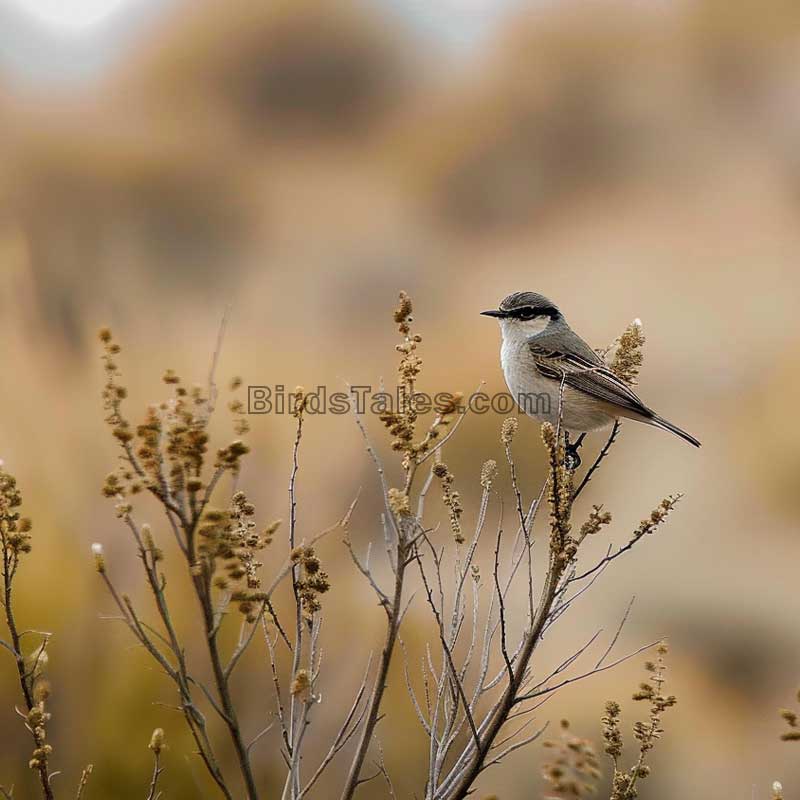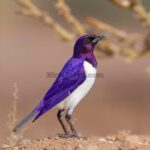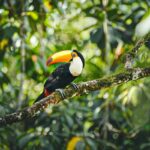Defining a Bird’s Habitat
A bird’s habitat is its home.
It includes everything the bird needs to live and reproduce.
This means food, water, shelter, and safety from predators.
Different birds need different things from their habitats.
A habitat isn’t just a place.
It’s a complex web of interactions.
For a bird, finding food and avoiding predators is a daily challenge.
Some birds live in dense forests, hiding among the leaves.
Others prefer open grasslands, where they can spot danger from afar.
The habitat also affects how a bird finds a mate and raises its young.
For instance, some birds build intricate nests high in the trees, while others lay their eggs on the ground.
Essential Components of a Habitat
Birds rely on several key elements to survive.
These include:
- Food: Birds eat insects, seeds, fruits, and nectar. Their diet depends on their beaks and digestive systems. For instance, a hummingbird’s long beak is perfect for sipping nectar, while a hawk’s sharp talons and beak are made for catching and eating prey. Some birds, like woodpeckers, have strong beaks to drill into trees for insects. Others, like sparrows, have short beaks ideal for picking up seeds.
- Water: Birds need water to drink and bathe in. Bathing helps keep their feathers in good condition, which is crucial for flight. In deserts, birds have adapted to get water from their food. In wetter areas, birds might use streams, ponds, or even puddles. A bird’s ability to find and use water sources can be the difference between life and death.
- Shelter: Trees, shrubs, and rocks provide cover from predators and weather. Birds need places to hide and rest. A dense bush can be a safe haven from a hawk, while a thick tree canopy can protect from rain and wind. Birds also need shelter to sleep and to escape extreme temperatures.
- Nesting sites: Birds build nests in various places like trees, shrubs, or on the ground. The type of nest depends on the bird species. Eagles build large nests high in trees or on cliffs, using sticks and branches. Small birds, like finches, might build tiny, delicate nests in bushes. Ground-nesting birds, like plovers, scrape out shallow depressions in the sand or dirt.
The violet starling is a striking bird found in sub-Saharan Africa. Known for its bright purple feathers, it lives in…
Habitat Variety Across Bird Species
Different birds live in different places.
Here are some types of habitats:
- Forest Habitats: Covered with trees and undergrowth. Birds here use trees for nesting and food. Forests can range from dense, dark rainforests to open, sunny woodlands. Each type of forest offers different resources. Birds like owls and woodpeckers are well-suited to life among the trees.
- Grasslands: Open areas with grasses. Birds nest on the ground or in low shrubs. Grasslands offer lots of seeds and insects, but few hiding places. Birds here, like meadowlarks and prairie chickens, have adapted to blend in with the tall grasses.
- Wetlands: Areas with water, like marshes or swamps. Birds here often have long legs for wading. Wetlands are teeming with life, from fish to insects. Birds like herons and ducks are common sights, using the water for food and nesting.
- Deserts: Dry areas with few plants. Birds here can survive with little water. Desert birds, like roadrunners and cactus wrens, have special adaptations to handle the heat and lack of water. They often find food that provides moisture, like insects and succulent plants.
Birds adapt to their habitats.
For example, forest birds have strong claws for gripping branches, while wetland birds may have long legs for wading.
These adaptations help birds survive and thrive in their specific environments.
Bird Habitats and Their Ecological Importance
Bird habitats do more than just support birds.
They are crucial for the environment.
Birds help keep ecosystems healthy.
The violet starling is a striking bird found in sub-Saharan Africa. Known for its bright purple feathers, it lives in…
Impact on Ecosystems
Birds play key roles in their habitats:
- Seed Dispersal: Birds eat fruits and spread seeds, helping plants grow. When birds eat berries, the seeds often pass through their digestive systems unharmed. These seeds get deposited in new locations, ready to sprout. This helps plants spread and maintain healthy populations.
- Pest Control: Birds eat insects, keeping pest populations in check. A single bird can eat hundreds of insects a day. This natural pest control helps protect crops and gardens. Farmers often welcome birds into their fields as they help reduce the need for chemical pesticides.
- Pollination: Some birds, like hummingbirds, help pollinate flowers. As they feed on nectar, they transfer pollen from flower to flower. This process is essential for the reproduction of many plants. Without birds, some plants would struggle to survive.
Conservation Challenges
Bird habitats face many threats:
- Deforestation: Cutting down trees destroys forest habitats. Many bird species depend on forests for food and shelter. When forests are cleared for agriculture or development, these birds lose their homes. This can lead to population declines and even extinction.
- Climate Change: Changes in temperature and weather affect bird habitats. Birds migrate based on seasonal cues, which are changing with the climate. Warmer temperatures can alter food availability and nesting times. Some birds may not be able to adapt quickly enough to survive.
- Urbanization: Building cities fragments habitats, making it hard for birds to survive. Roads, buildings, and other structures break up natural areas. This can isolate bird populations and reduce their access to resources. Birds like the songbird might struggle, while more adaptable species like pigeons thrive.
The violet starling is a striking bird found in sub-Saharan Africa. Known for its bright purple feathers, it lives in…
Human Influences on Bird Habitats
Humans impact bird habitats in many ways, both good and bad.
Urbanization and Habitat Fragmentation
Building cities breaks up natural habitats.
Some birds adapt to city life, but many struggle.
Urban areas can be harsh environments for birds.
Noise, pollution, and lack of natural resources are common problems.
However, some birds, like the peregrine falcon, have adapted to hunt in cities.
Others, like the chimney swift, use buildings as nesting sites.
Fragmentation divides habitats into smaller pieces.
This makes it difficult for birds to find food and mates.
Fragmented habitats also increase the risk of predation.
Predators have easier access to these isolated bird populations.
Conservation efforts often focus on creating wildlife corridors to connect fragmented habitats.
Conservation and Restoration Efforts
People are working to save bird habitats:
- Protected Areas: National parks and reserves protect habitats from destruction. These areas provide safe havens for birds and other wildlife. They also offer opportunities for research and education.
- Habitat Restoration: Planting trees and restoring wetlands helps birds return to these areas. Restoration projects can revive degraded habitats. For example, replanting native vegetation can attract birds back to an area. Wetland restoration improves water quality and provides nesting sites for waterfowl.
- Community Actions: Individuals can help by creating bird-friendly spaces in their yards. Simple actions like putting up bird feeders, planting native plants, and providing water sources can make a big difference. Communities can also support local conservation groups and participate in citizen science projects.
Conclusion
Bird habitats are vital for their survival.
These environments provide food, water, shelter, and nesting sites.
Birds also play important roles in keeping ecosystems healthy.
But, bird habitats face threats from human activities.
Conservation efforts are crucial.
We can all help by supporting and participating in habitat preservation.
Birds depend on us to protect their homes.



